Driving south, down Highway 213 from Oregon City, rolling green fields and small towns fly by. The two-lane highway and it’s serene landscape might just make you dream of small town life or even buying a farm. A little past the town of Mollala, a blue sign signals the approach of the turn off to Marquam Hill Ranch. Down a narrow gravel lane there is a barn and paddocks, where alpacas can be seen lounging or eating hay.
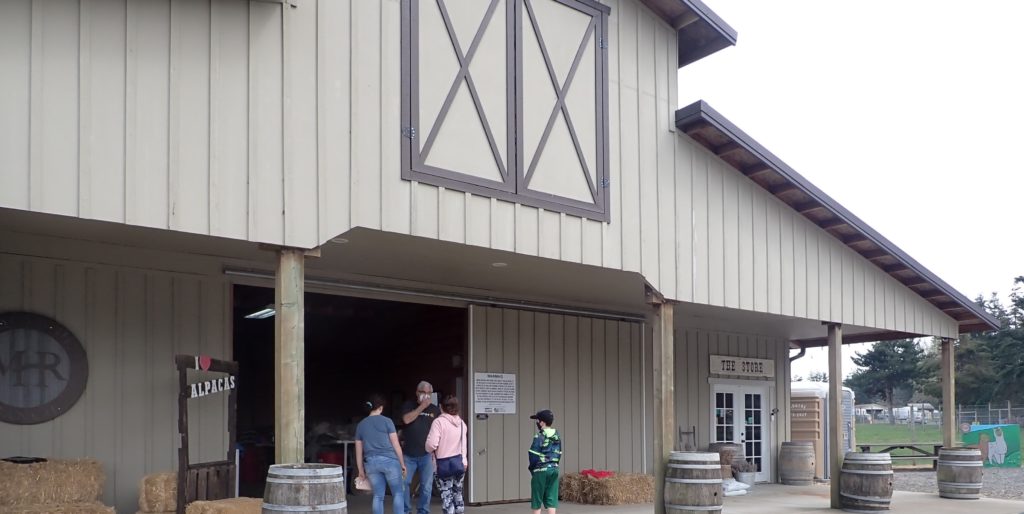
My daughter was very excited about seeing some alpacas; we were there to talk to Bill Cameron about the Huacaya alpaca breeding program he and his wife Jennifer started in 2005.
Bill greeted us cordially and agreed to show us around between tours. He started off by giving us a couple of brochures and telling us that Marquam Hill Ranch was chosen as number one of the “100 Best fan-favorite destinations in Oregon” in 2020, an award based on reviews posted on Google, TripAdvisor, and Yelp. I think that is very impressive!
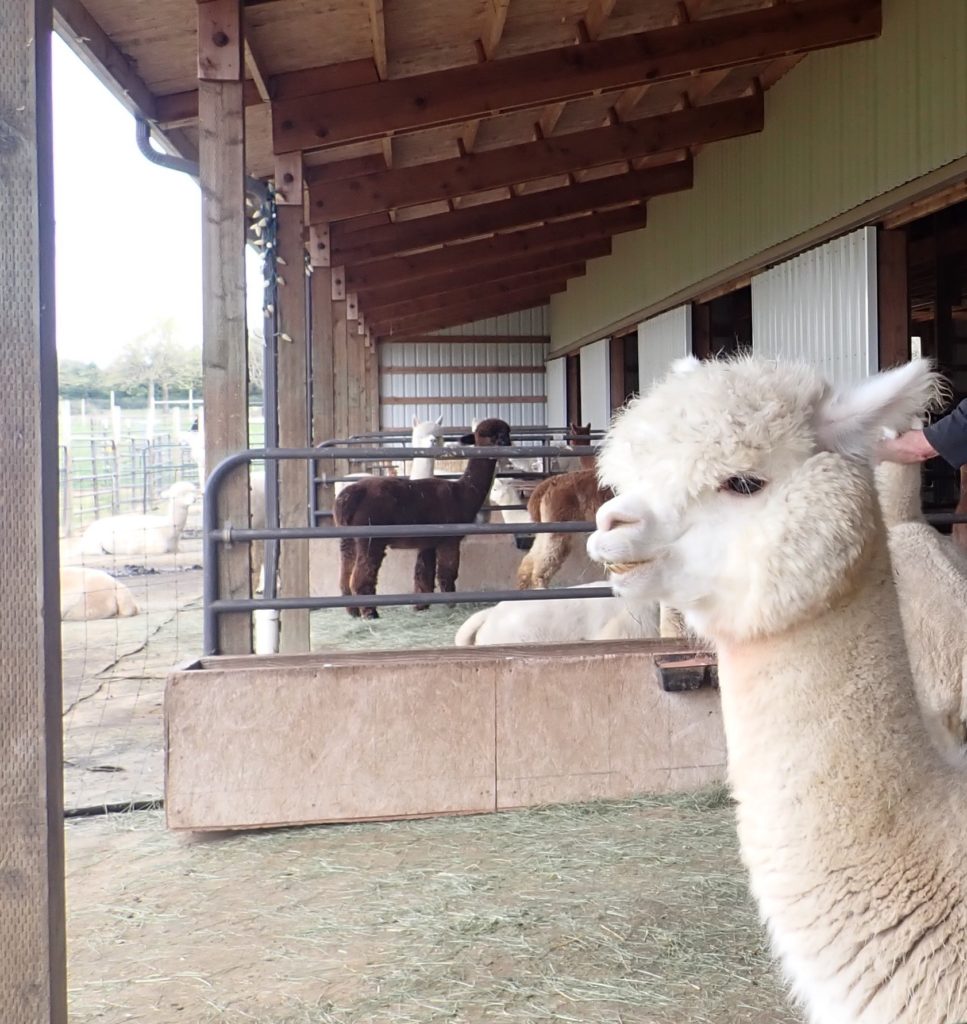
The barn was clean and spacious, with pens that were partially inside and outside. On the east side of the barn were the males we had seen driving in. The majority of the animals, those on the west side, were all pregnant females. Ordinarily out grazing in the paddocks, they were currently munching on grass hay in their pens because recent heavy rains had made the pastures very muddy.
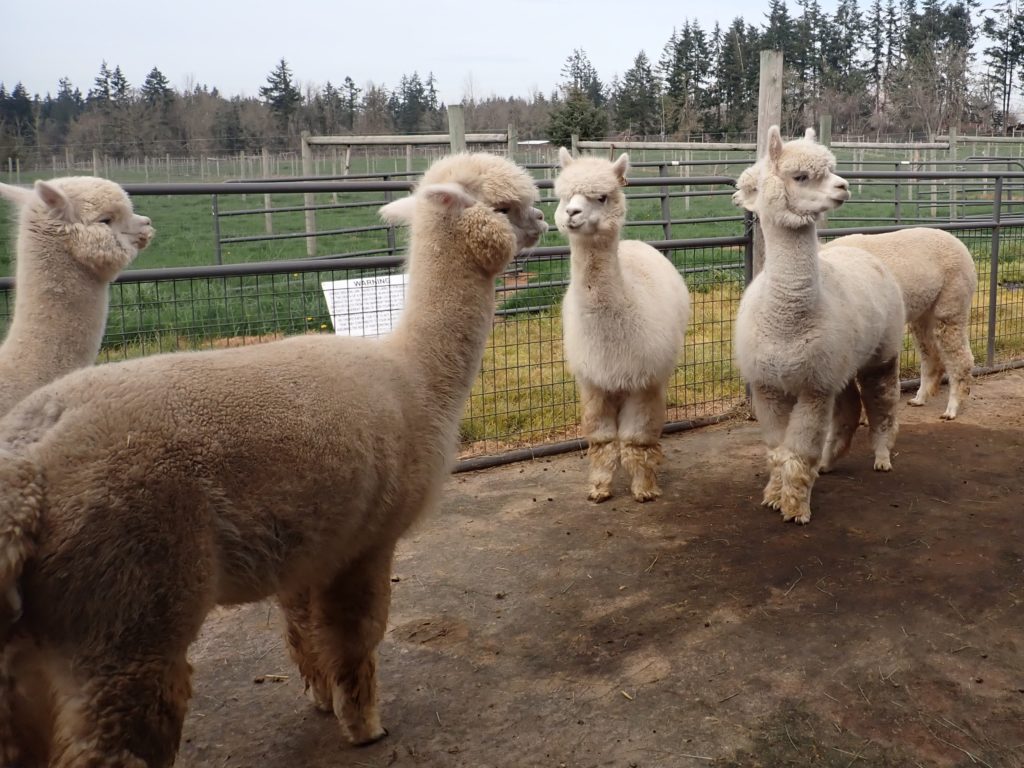
Bill explained to us that their main business is breeding and animal sales. They use a combination of art and science to breed champion and pet-quality alpacas with exceptional quality fleece.
The alpacas were adorable and very curious, poking their noses through the fence to check out the newcomers, so I asked if we could pet them.
They don’t really like it, we were told, because they are prey animals and easily spooked. The Camerons have two Maremma guard dogs to help the alpacas feel safe. Bill kindly wrangled an alpaca to show us up close.

Hugging the lucky alpaca’s neck and spreading the fleece so we could see the way it grew, he then let us pet her back. Her fleece was so soft! Although the girls were shorn on Memorial day, they already have about 8 inches of fluffy fleece. Bill showed us how tiny they are, especially around the neck, once the fleece is accounted for.
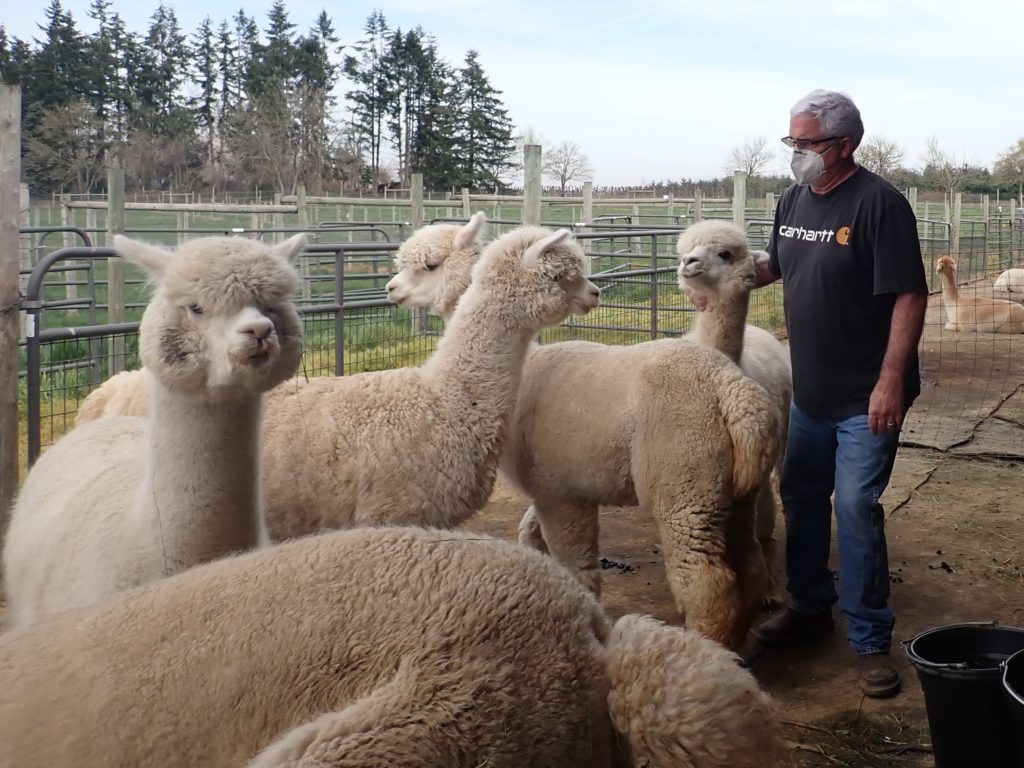
When asked about how they ended up raising alpacas, Bill said that he used to commute to the UK every other week, and that Jennifer wanted to find a way to have him home more. “We want you here with us,” she told him. So they started out small and after 4-5 years they bred a little boy who became a champion. “I got too busy to keep doing what I was doing,” said Bill, and the rest is history.
With a stable full of alpacas, a gift shop, shows, events, and tours; it does seem like a busy, rewarding life.
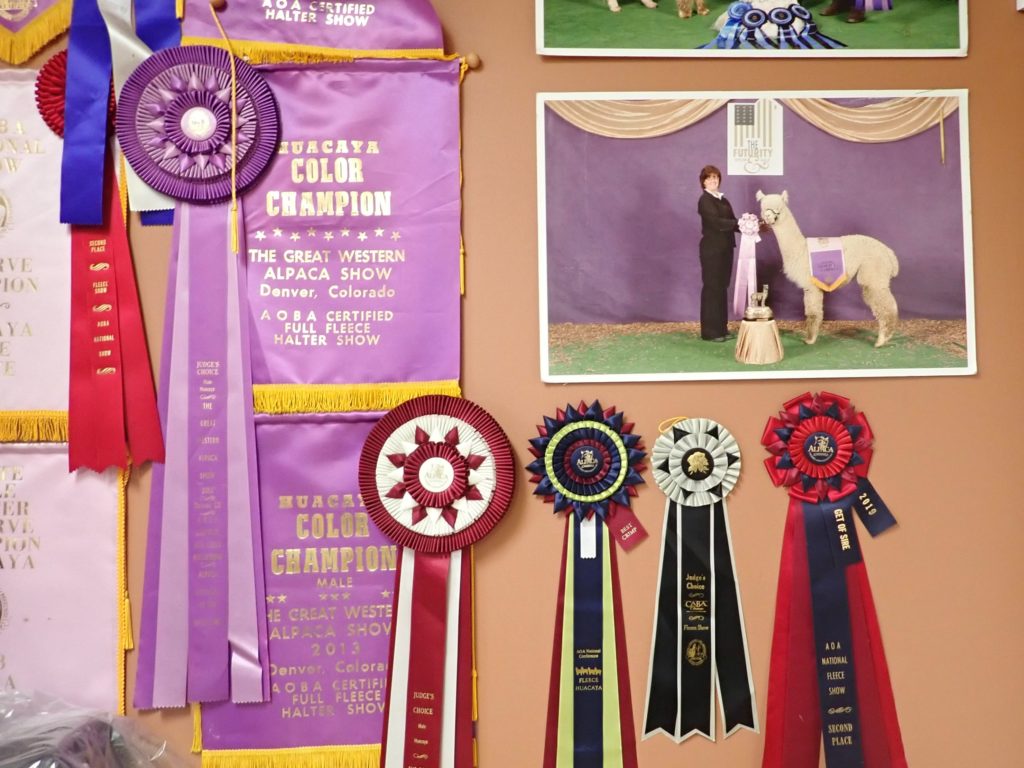
Behind the door to the giftshop is a wall covered in honor. Photos, certificates, and ribbons all attest to the Camerons’ successful breeding program.
Some of the fleece is sent to be made into fine yarn and rugs, which are displayed along one wall, imported clothing in the back, and many of the softest, most beautiful teddy bears you have ever seen or felt.
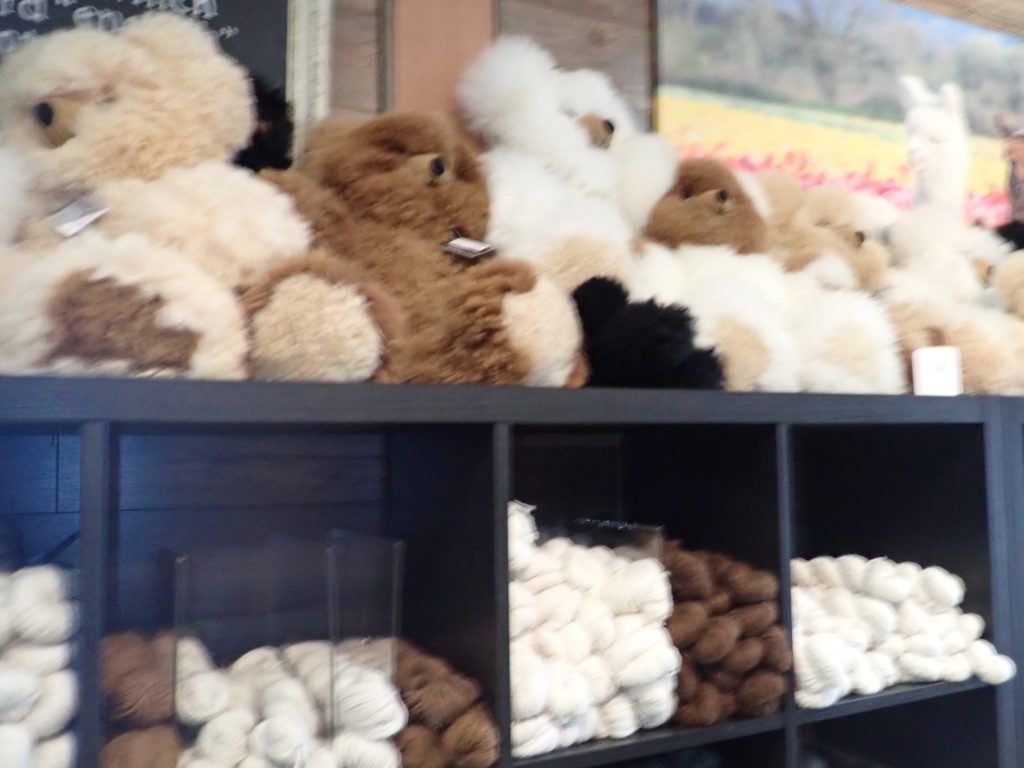
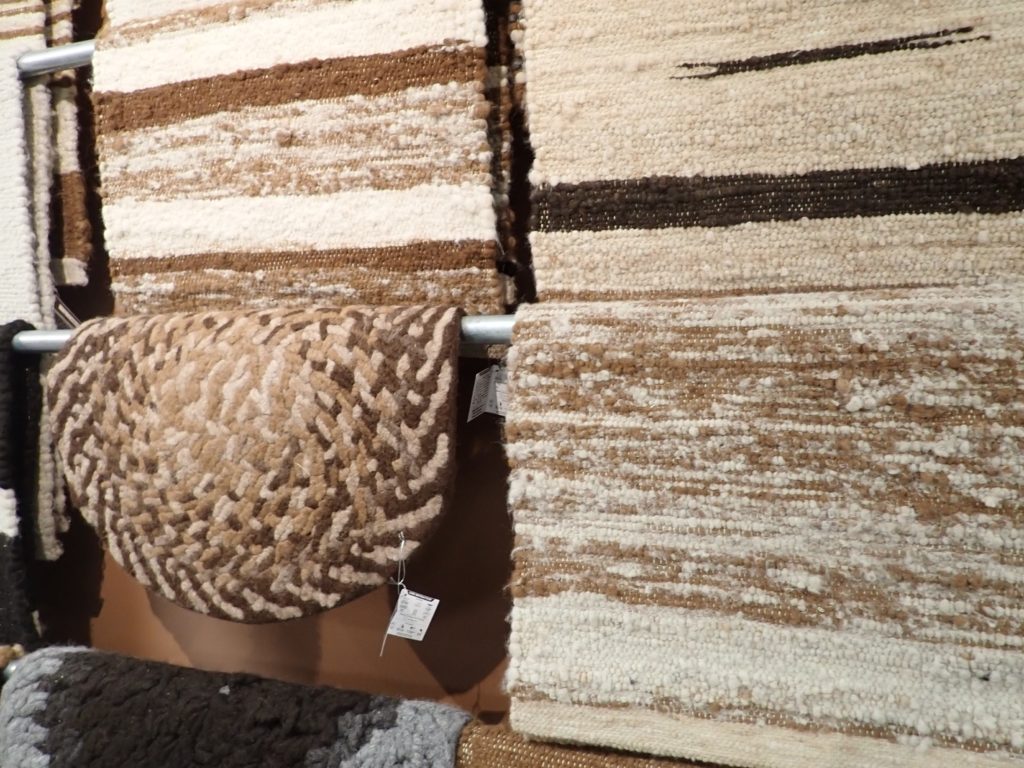
Bill goes to Peru once a year to work with local artisans. When I asked about the teddy bears he pointed out a large photograph of thousands of alpacas on the Altiplano in Peru. “Most of the world’s alpacas live on the Altiplano,” he said. “When one dies, the family uses the meat for food and tans the hide to make these bears.” They are very beautiful and I was touched that the alpacas are honored this way in death.
If you would like to learn more about the Marquam Hill Ranch, they have a website at www.mhralpacas.com/ and a Facebook page.
For additional information about Alpacas you might try some of these links:
- Alpaca
- 8 Fun Facts About Alpacas
- Alpacas and their South American heritage
- Early history of Alpacas
- About the natural symbiosis between alpacas and their homeland
- About Suri Alpacas

![]()

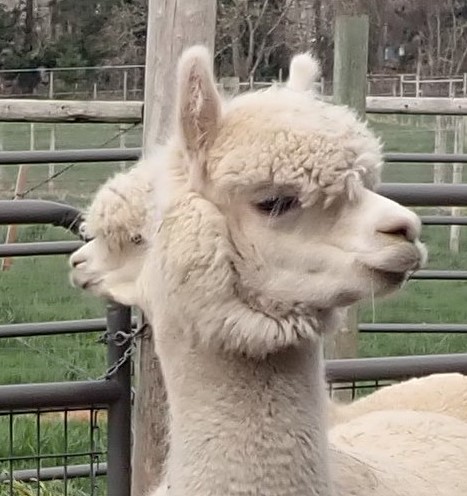
You cannot resist the fluffiness!
Lol I always thought the white fluffy ones look like sheep with long necks lol